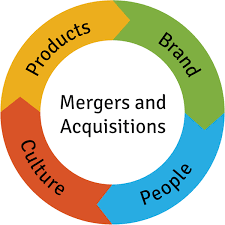
Keys to Successful M&A from an Operations Standpoint
William Vaughan Company was founded by William Vaughan in 1959 and we have since evolved into one of the largest locally owned CPA firms in Northwestern Ohio. I joined the firm in 2002 as firm administrator, and was promoted to Chief Operating Officer in 2009. Currently we have seven partners and approximately 60 employees. In July of this year, we acquired a firm in Napoleon, OH and retained that office location. This is our first time creating a new location for the firm, and having multiple offices is certainly a new dynamic for us. However, it was important to us, and our clients obtained through the acquisition, that we have a strong local presence. We’re looking forward to seeing how this new office will develop.
This recent acquisition is not our first. We acquired another local firm in November of 2013, and adjusted our strategic plan aiming to acquire one new firm per year. Because that acquisition happened late in the year, we did not meet this goal in 2014 but knew that it would be a focus for us in 2015. Right after busy season in 2015, a friend of the firm contacted our managing partner and indicated that he was ready to sell his practice. During our 2013 acquisition, we had learned that open communication is vital to a smooth transition, so this time around other members of our management team and I were immediately brought into the conversation. The negotiation for this acquisition was primarily handled by three partners (including our current and former managing partners) and myself.
Our first step in the process was to have both firms sign a confidentiality agreement so that we could freely share in-depth firm information to determine if the acquisition was a good fit. Our firm then did a thorough review of their engagements and work papers to confirm that the quality of the work was aligned with our expectations. We also looked at their clients to identify areas where we could provide more value. After determining that the firm was a good fit for us, we then began working with our IT and HR departments. These are the two areas where mergers and acquisitions can go wrong. From an IT perspective, we needed to ensure that the technology being utilized in both offices was uniform. It was crucial to make sure that we were taking all the necessary steps to integrate the new location into our technology and to provide comprehensive training on our systems to new employees. From an HR standpoint, we needed to assess each employee’s skill level and also make sure that their positions were aligned with our job titles.
Something that has been very useful in the acquisitions process are the tools and templates available to us through our membership in the AICPA’s PCPS Section. As COO, I often utilize the resources found in the PCPS Firm Administrator’s Hub in the operations of the firm. However, PCPS also has a number of resources that were useful to us during the acquisition. The Due Diligence Checklist was very helpful in the early stages of the process. We went through PCPS resources and found several articles that provided insight into the IT and HR issues we needed to address, like “Merger Success: Bringing IT into the Equation”. We used tools like the sample merger announcement and several resources in the Human Capital Center that were helpful in having conversations with our team about why we were doing the acquisition and how it would benefit the firm and existing employees. Overall, the resources available through PCPS were extremely helpful in making our acquisition process smooth and successful.
I would say that there are two key components to a successful acquisition from an operations perspective:
1) Transparency is key! Bring your team into the conversation early and maintain open lines of communication with employees from both firms. Make sure to keep your current employees informed of what is going to be changing and what is going to stay the same. Big things, like benefits and salary, obviously need to be discussed but the little things, like where their office will be, are just as important.
2) Don’t try to reinvent the wheel! Utilize the resources that are available to you, especially if this is a first time merger or acquisition for your firm. If you belong to an alliance, see what they have available. For us, leveraging our CPAFMA and PCPS memberships were great resources during both acquisitions. Reach out to peers who have been through a merger and acquisition and learn about their best practices and lessons learned. Don’t be afraid to ask for help. It will save you so much time and stress.